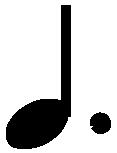



The  symbol present in the metronome marking in FE (→EE), corresponding neither to the beat nor to the movement unit (quaver), is most probably a mistake. Such situations occur in other pieces by Chopin as well, cf., e.g. the Andante spianato from Op. 22. Therefore, in the main text we provide
symbol present in the metronome marking in FE (→EE), corresponding neither to the beat nor to the movement unit (quaver), is most probably a mistake. Such situations occur in other pieces by Chopin as well, cf., e.g. the Andante spianato from Op. 22. Therefore, in the main text we provide  , as it was already done in GE.
, as it was already done in GE.
Compare the passage in the sources »
category imprint: Differences between sources; Editorial revisions
issues: Inaccuracies in FE, GE revisions
notation: Verbal indications
